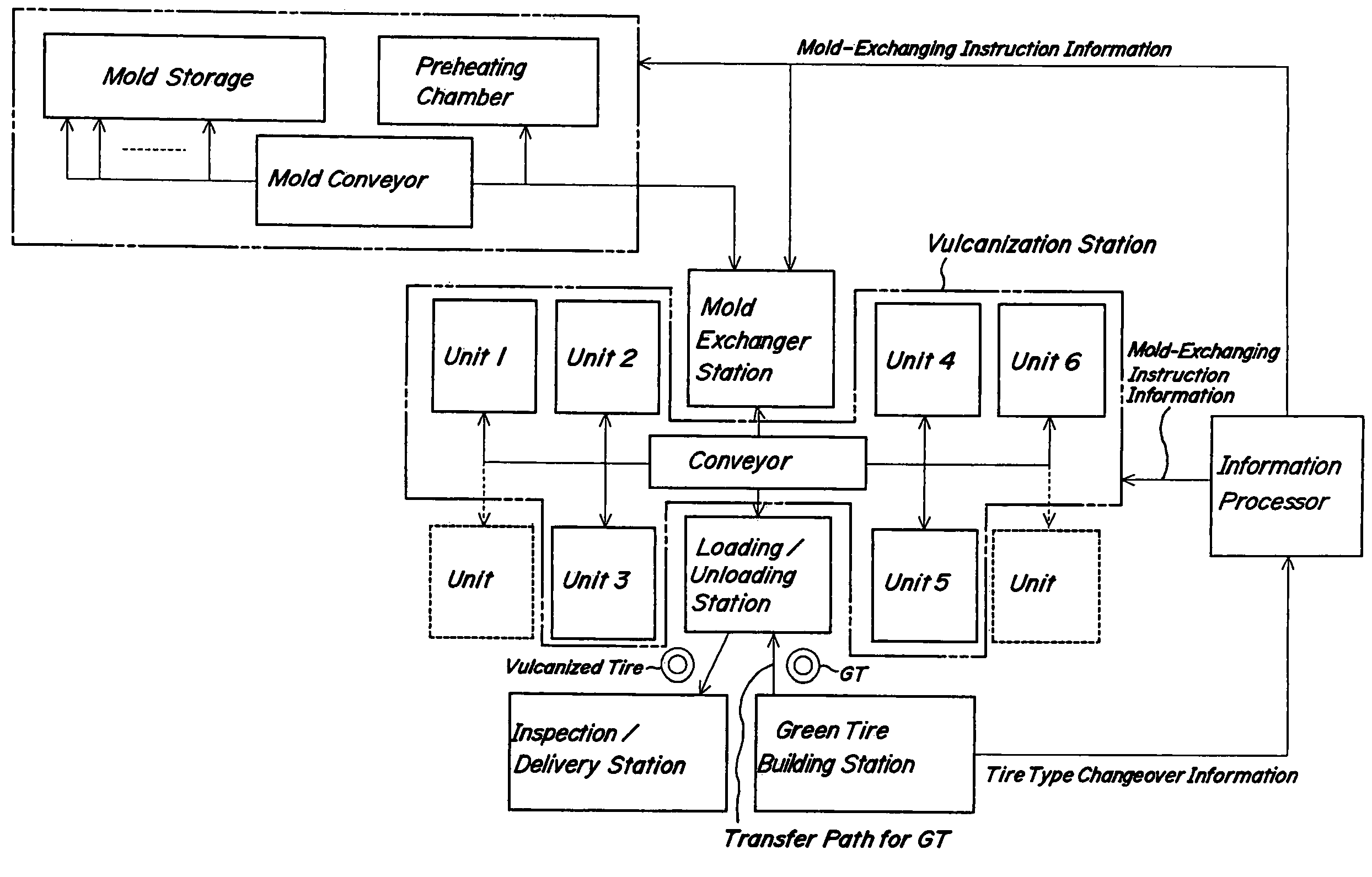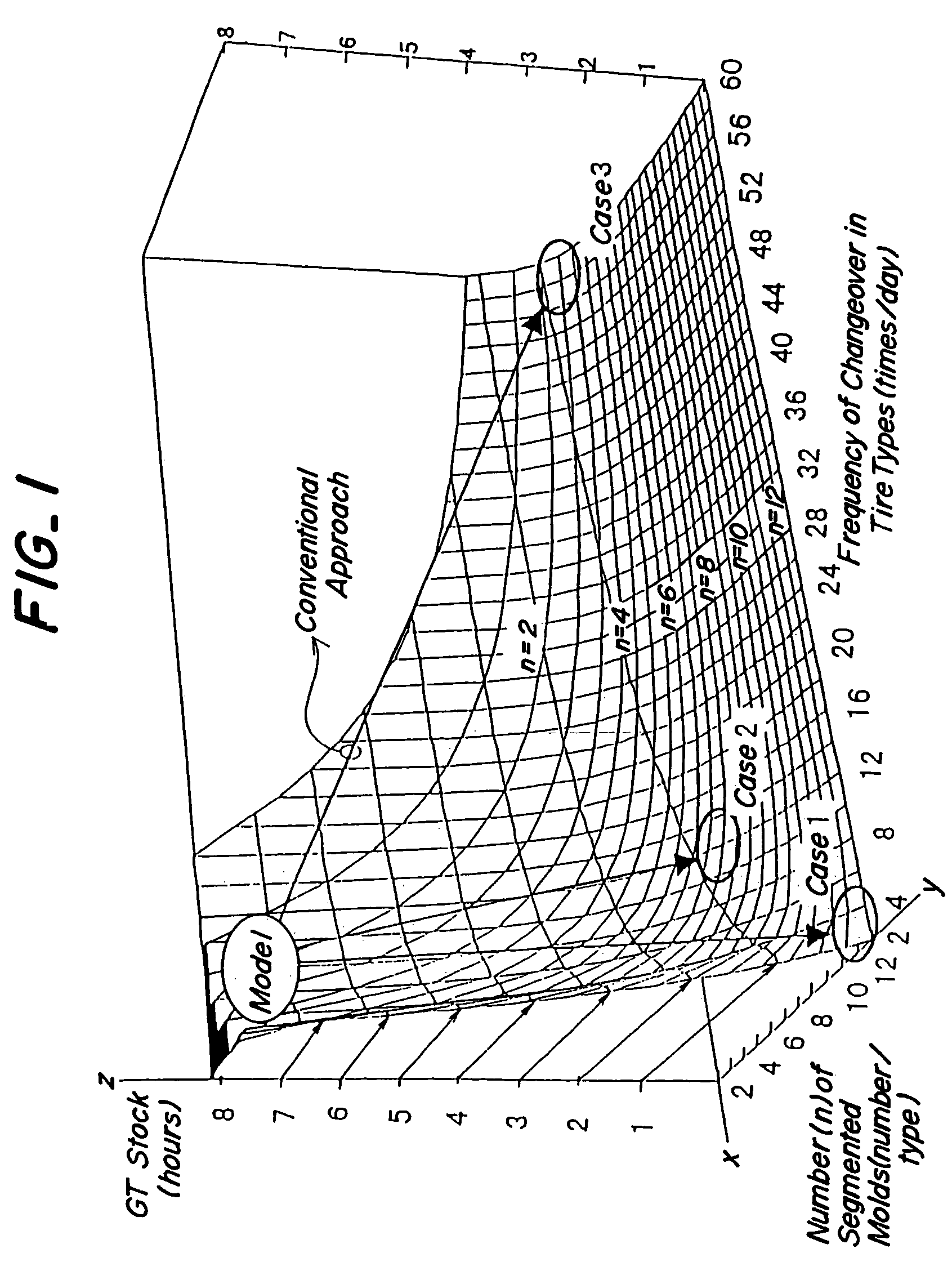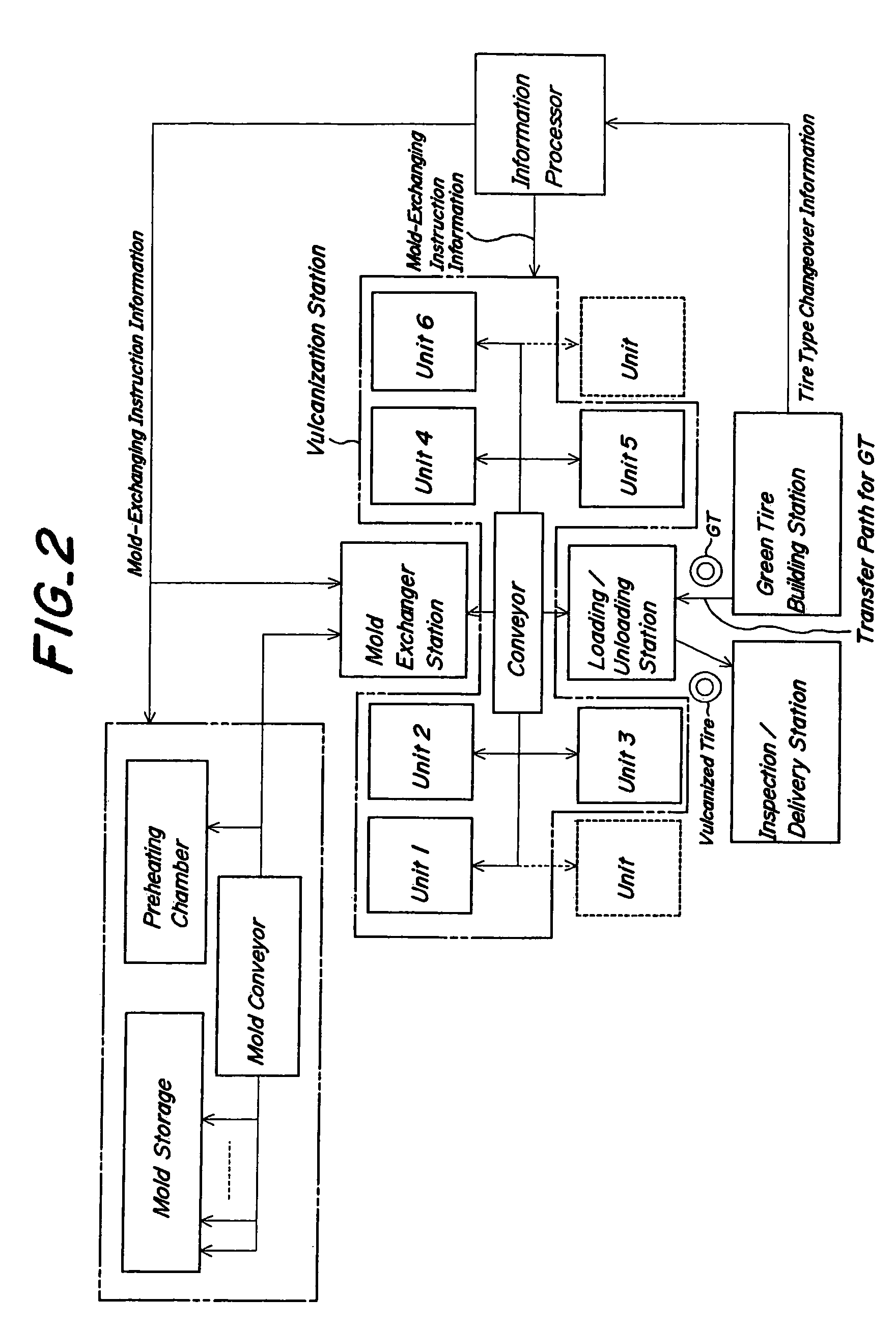Production system for pneumatic tires
- Summary
- Abstract
- Description
- Claims
- Application Information
AI Technical Summary
Benefits of technology
Problems solved by technology
Method used
Image
Examples
Embodiment Construction
[0036]The present invention provides an improved system for producing pneumatic tires, in particular radial ply tires, by performing a green tire building step for assembling unvulcanized members of a radial tire into a green tire GT within a predetermined building cycle time TA, and a vulcanization step for carrying out vulcanization of the green tire within a predetermined vulcanizing cycle time TB. The vulcanizing cycle time TB corresponds to the time as measured from loading of a green tire GT onto a vulcanizing mold until unloading or removal of a vulcanized tire after the vulcanization of the green tire has been completed. As generally known in the art, the vulcanizing cycle time TB is typically at least five times longer than the building cycle time TA. This will be more fully explained below with reference to FIG. 1, in connection with the number of segmented molds for PSR tires by way of example.
[0037]FIG. 1 shows an exemplary situation in which the ratio TB / TA of the vulca...
PUM
| Property | Measurement | Unit |
|---|---|---|
| Temperature | aaaaa | aaaaa |
Abstract
Description
Claims
Application Information
 Login to View More
Login to View More - R&D
- Intellectual Property
- Life Sciences
- Materials
- Tech Scout
- Unparalleled Data Quality
- Higher Quality Content
- 60% Fewer Hallucinations
Browse by: Latest US Patents, China's latest patents, Technical Efficacy Thesaurus, Application Domain, Technology Topic, Popular Technical Reports.
© 2025 PatSnap. All rights reserved.Legal|Privacy policy|Modern Slavery Act Transparency Statement|Sitemap|About US| Contact US: help@patsnap.com



